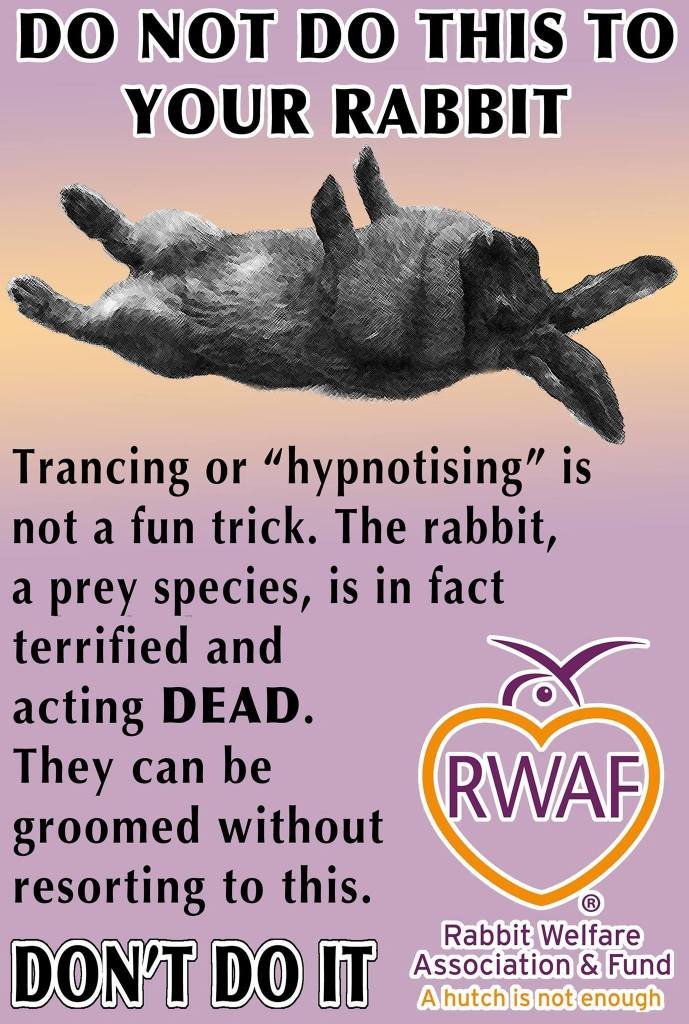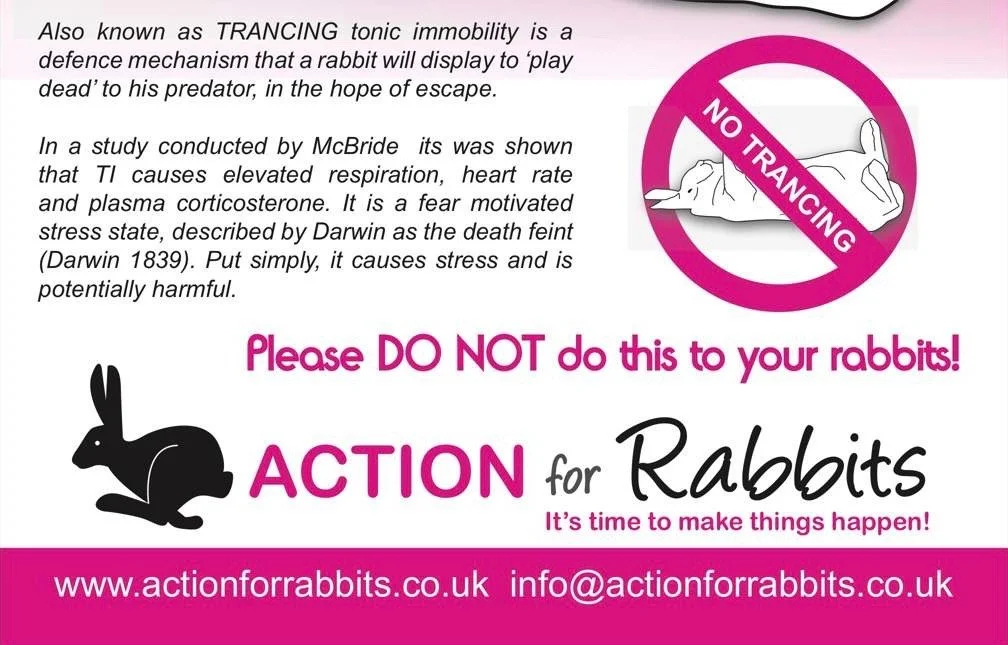Trancing / Tonic Immobility
Trancing - What it is and why you should NOT do it....
What is “trancing” in rabbits? Historically, holding rabbits in dorsal recumbency, or “like a baby,” has been recommended as a low-stress mode of handling for brief examinations or clinical procedures.
We now know that this behaviour is actually tonic immobility, a behavioural response to a perceived threat, characterised by muscular rigidity, profound motor inhibition, and suppressed vocal behaviour. This behaviour occurs when freezing in response to a predator approach, fight, or flight are no longer perceived as options (Gallup 1974, Gallup 1977).
McBride et al. (2006) observed that rabbits held in a tonic immobility position had elevated respiratory rates, heart rates, and plasma corticosterone concentration. Additionally, they expressed fear behaviours such as widened eyes and flattened ears, and demonstrated more hiding behaviours and fewer grooming behaviours post-trancing. There is strong evidence that these physiological and behavioural responses are consistent with a fear-motivated stress state (Day 2004). It has also been demonstrated that rabbits will anticipate entering the tonic immobility state and do so more quickly with exposure, but they do not become habituated and it remains stressful (Farabollini et al. 1990).
In short, tonic immobility is a hard-wired, instinctual response to a perceived predatory threat, and the rabbit's physiological and behavioural response demonstrates that it imparts a degree of distress to the animal. It does not help owners to bond with their rabbits, and clients should be educated on the fear-inducing effects of this behaviour (Oxley and Ellis 2015).
In the veterinary practice, we should remind ourselves that we first do no harm. It should be argued that for patients that are so fearful that simple exams cannot be performed, we can consider anxiolytic drugs. Of course, pros and cons of any restraint method need to be considered.
Tip by: Christina Miller, RVT, BSc, Metro Animal Emergency Clinic (Dartmouth, Canada)
Photo by: Dana Burick Worrell, Mount Laurel Animal Hospital (Mount Laurel, NJ)
Source: Association of Exotic Mammal Veterinarians
This research paper discusses the physiology and effects of TI on rabbits and explains why it should not be done.
Trancing Rabbits: Relaxed hypnosis or a state of fear?



